How Technology is Revolutionizing Patient Communication in Next-Gen Hospitals
Imagine working at a hospital where every piece of your patient’s care is communicated clearly, instantly, and right at their fingertips. Sounds like a scene from the future, right? Well, that future is happening now. Technology is transforming modern healthcare in ways we never thought possible, turning hospitals into hubs of real-time, transparent communication. At the heart of this revolution is something simple yet powerful: custom patient boards. These innovative tools are reshaping how patients connect with their care teams, making the healthcare experience not just better—but truly patient-centered. Let’s dive into how this technology is enhancing patient safety and communication and transforming the patient experience.
The Evolution of Healthcare Communication
For nurses effective communication with patients has always been a cornerstone of quality care. Historically, patient communication relied heavily on traditional methods such as handwritten charts and static whiteboards. These tools, while foundational, presented challenges including delays in information updates, potential misinterpretations, and limited patient engagement. Nurses often had to navigate these constraints to ensure that patients and care teams stayed informed.
As healthcare advanced, so did the expectations for communication. The emergence of digital tools marked a significant turning point. Electronic Health Records (EHRs) and digital patient boards began to replace manual documentation, offering more accurate and timely access to patient information. This shift not only reduced errors but also enhanced collaboration among healthcare professionals.
Today, we stand at the forefront of a new era with the rise of Hospital 2.0—a movement emphasizing standardized, technology-supported approaches to healthcare delivery. Central to this evolution is the demand for real-time, transparent communication that empowers patients and streamlines care coordination. Custom patient boards integrated with live data from EHRs exemplify this revolution, providing nurses and CNOs with dynamic platforms to engage patients actively, improve care outcomes, and foster trust. These solutions are transforming hospital discharge and patient spaces into connected journeys where every member of the care team, including the patient, is informed and involved at every step.
Technology Features in Healthcare System Custom Patient Boards
Custom patient boards in next-generation hospitals are packed with innovative features designed to enhance healthcare communication and patient engagement.
- Real-Time Updates: These boards are seamlessly integrated with Electronic Health Records (EHRs), providing live updates on treatment plans, medication schedules, and upcoming procedures. This real-time information ensures that patients and healthcare providers are always on the same page, reducing errors and improving care coordination.
- Interactive Displays: To foster active patient involvement, custom boards incorporate interactive elements such as QR codes. Patients can scan these codes to access educational materials, appointment details, or personalized care instructions, making it easier to stay informed and engaged in their healthcare journey.
- Personalized Information: Each board is tailored to the individual patient’s needs, displaying customized content like pain management plans, recovery milestones, and specific health goals. This personalization empowers patients by giving them clear visibility into their care progress and encouraging collaboration with their medical team.

Impact on Patient Safety and Experience
Custom patient boards have a profound impact on the overall patient safety and experience in next-generation hospitals. By providing clear, real-time information, these boards help patients feel more informed and involved in their care journey. This transparency reduces anxiety and builds trust between patients and their healthcare providers.
One of the key benefits is enhanced pain management. Boards display personalized pain management schedules, medication reminders, and progress tracking, enabling patients to actively participate in their recovery process. This empowerment leads to better adherence to treatment plans and improved outcomes.
Additionally, the impact of advanced communication technologies on patient safety is transformative and essential. By providing nurses and the entire care team with real-time, accurate information through custom patient boards and digital tools, the risk of errors is significantly reduced. Care teams recognize that clear and timely communication fosters a safer environment where potential issues—such as medication errors, delayed treatments, or misinterpretation of patient needs—can be identified and addressed promptly.
Furthermore, empowering patients with accessible information encourages their active participation in care, which serves as an additional safety layer by promoting adherence to treatment plans and enabling early reporting of concerns. Ultimately, these innovations align with the healthcare organizations commitment to delivering high-quality, patient-centered care that prioritizes safety at every stage of the healthcare journey.
Impact on the 4 P’s of Patient Experience
Custom patient boards and advanced communication technologies positively influence the four key dimensions of patient experience, often referred to as the 4 P’s:
- Personalization: Tailored information such as individualized care plans, pain management schedules, and recovery milestones empower patients by addressing their unique health needs and preferences.
- Participation: Interactive features engage patients actively in their care, encouraging them to ask questions, provide feedback, and take ownership of their treatment journey.
- Partnership: Enhanced communication fosters collaboration and trust between patients, families, and healthcare providers, creating a supportive environment for shared decision-making.
- Privacy: Transparent yet secure sharing of information respects patient confidentiality while ensuring patients are well-informed and comfortable throughout their care process.
Let’s emphasize, these boards foster improved communication by bridging gaps between patients, their families, and care teams. By facilitating seamless information sharing, they promote collaboration and ensure everyone involved in the patient’s care stays aligned, ultimately enhancing the quality and coordination of healthcare delivery.
Why Hospitals Using Digital Whiteboards See Improved Patient Satisfaction and Outcomes
- Imagine slashing patient anxiety overnight by giving them real-time access to their care plan—digital whiteboards make this a reality.
- Empower your staff with pain management updates that engage patients to take control and speed up recovery.
- Witness dramatic boosts in patient engagement as interactive boards transform passive patients into active partners in their care.
- Cut down wasted time and miscommunication—digital whiteboards ensure everyone, from nurses to doctors, shares the same up-to-the-minute information.
- See measurable improvements in treatment adherence when patients clearly understand medication schedules and recovery milestones.
- Experience the confidence boost of how transparent communication via digital boards builds unshakable trust between patients and healthcare teams.
- Turn hospital stays from stressful to empowering by making complex medical information instantly accessible and easy to understand.
Modern Methods in Interior Design and Healthcare Construction
The transformation of healthcare communication in next-generation hospitals goes hand in hand with advancements in healthcare interior design and the construction industry. As hospitals evolve to become more patient-centered and technologically advanced, the integration of digital boards into healthcare environments has become a key component of modern hospital design.
Interior Design Plays A Planning Role in Care Coordination
Healthcare interior design now prioritizes creating spaces that support clear, effective communication among patients, families, and healthcare providers. Digital boards are seamlessly incorporated into patient rooms, nurses’ stations, and communal areas to provide real-time updates, personalized care information, and interactive features that enhance patient safety and engagement. This integration requires close collaboration between healthcare designers, architects, and the construction industry to ensure that digital infrastructure, such as wiring, mounting systems, and network connectivity, is thoughtfully embedded during the building or renovation process.
Building on the Patient Experience with the Healthcare Construction Industry
The construction industry plays a crucial role in delivering these innovative healthcare spaces. Modern methods of construction, including prefabrication and modular building techniques, are being employed to accelerate hospital projects while maintaining high standards of quality and cost-effectiveness. Standardised design frameworks facilitate the efficient incorporation of digital technologies like patient boards into hospital infrastructure.
By embedding digital boards as key components of healthcare interior design, hospitals can improve care coordination, reduce communication barriers, and enhance patient safety. This synergy between design and construction not only supports the delivery of cutting-edge healthcare but also ensures that new hospitals meet the evolving needs of patients and medical professionals alike. As the healthcare sector continues to develop, the collaboration between interior designers and the construction industry will be essential in creating environments that harness the full potential of information technology to transform patient safety and communication and care delivery.

Transforming Patient Communication: The Future of Healthcare
Technology is playing a critical role in revolutionizing patient communication within next-generation hospitals. By enabling real-time updates, personalized information, and interactive engagement, tools like custom patient boards are transforming how patients connect with their care teams. This shift not only enhances patient safety, experience, and satisfaction but also improves treatment adherence, care coordination, and overall healthcare outcomes.
To take your hospital’s patient communication to the next level, explore VisiCare’s custom patient Digital Boards—designed to empower patients, streamline care delivery, and foster transparent, effective communication in the healthcare environment of tomorrow. Ready for your future projects today? Get started now.
Comment (1)
Comments are closed.



Reinforcing Brand Identity with Custom Whiteboards in High-End Hospitals | VisiCare
August 4, 2025[…] these settings: as practical communication tools and as branding assets. Functionally, they provide real-time updates on treatment plans, medication schedules, and recovery goals, enhancing patient education and […]